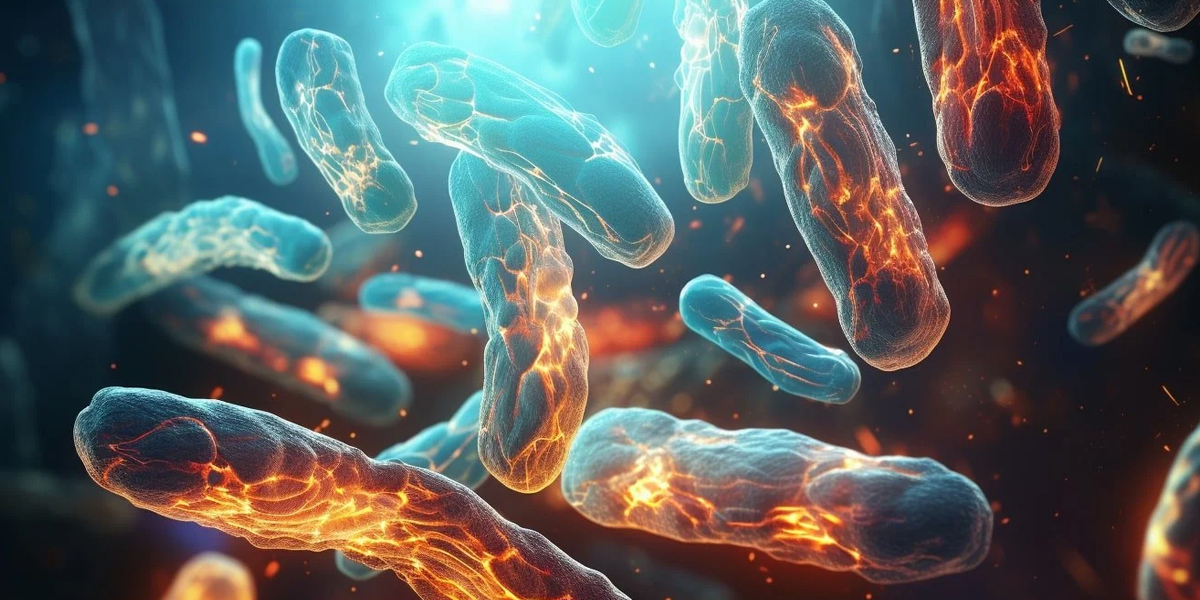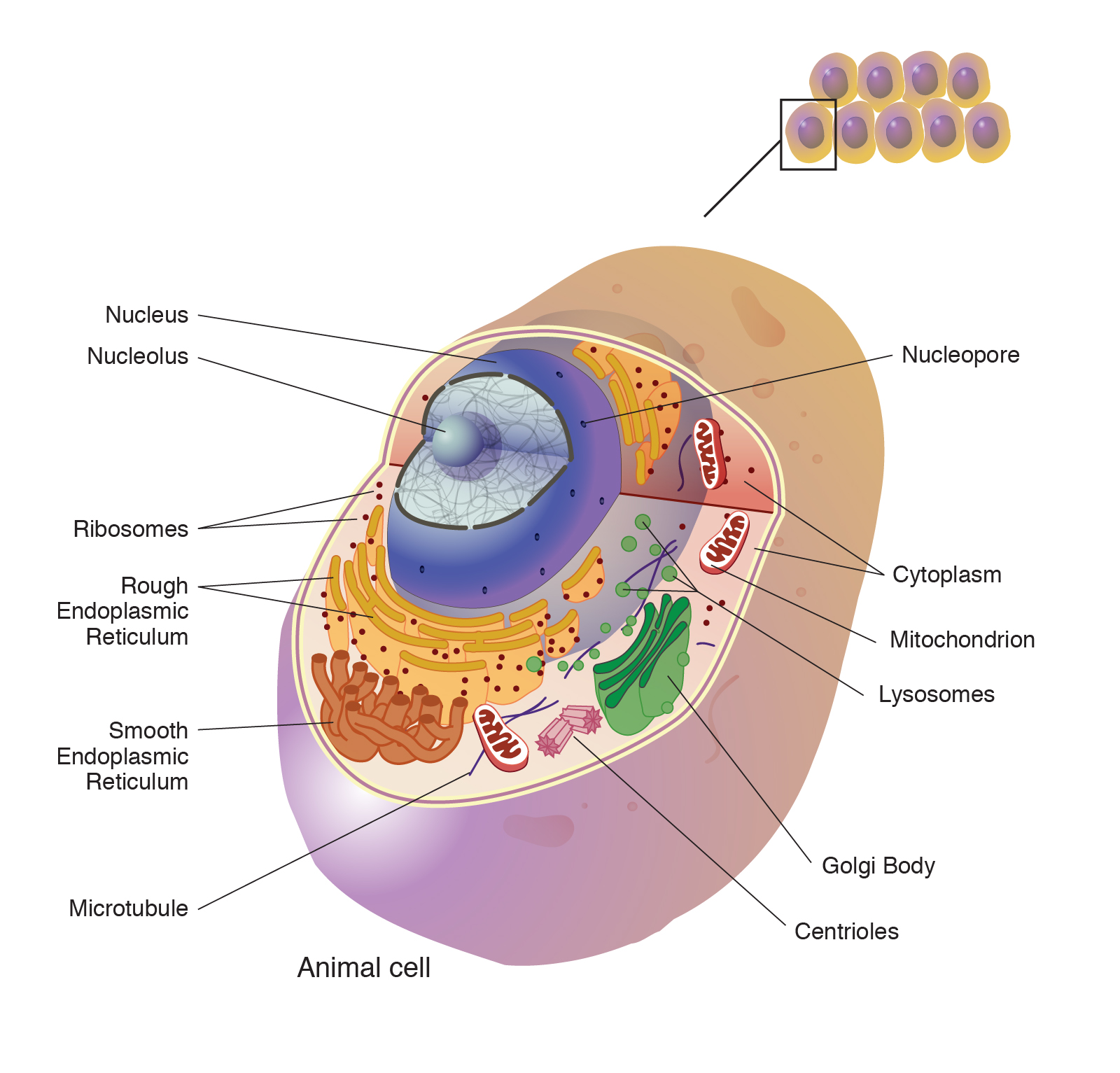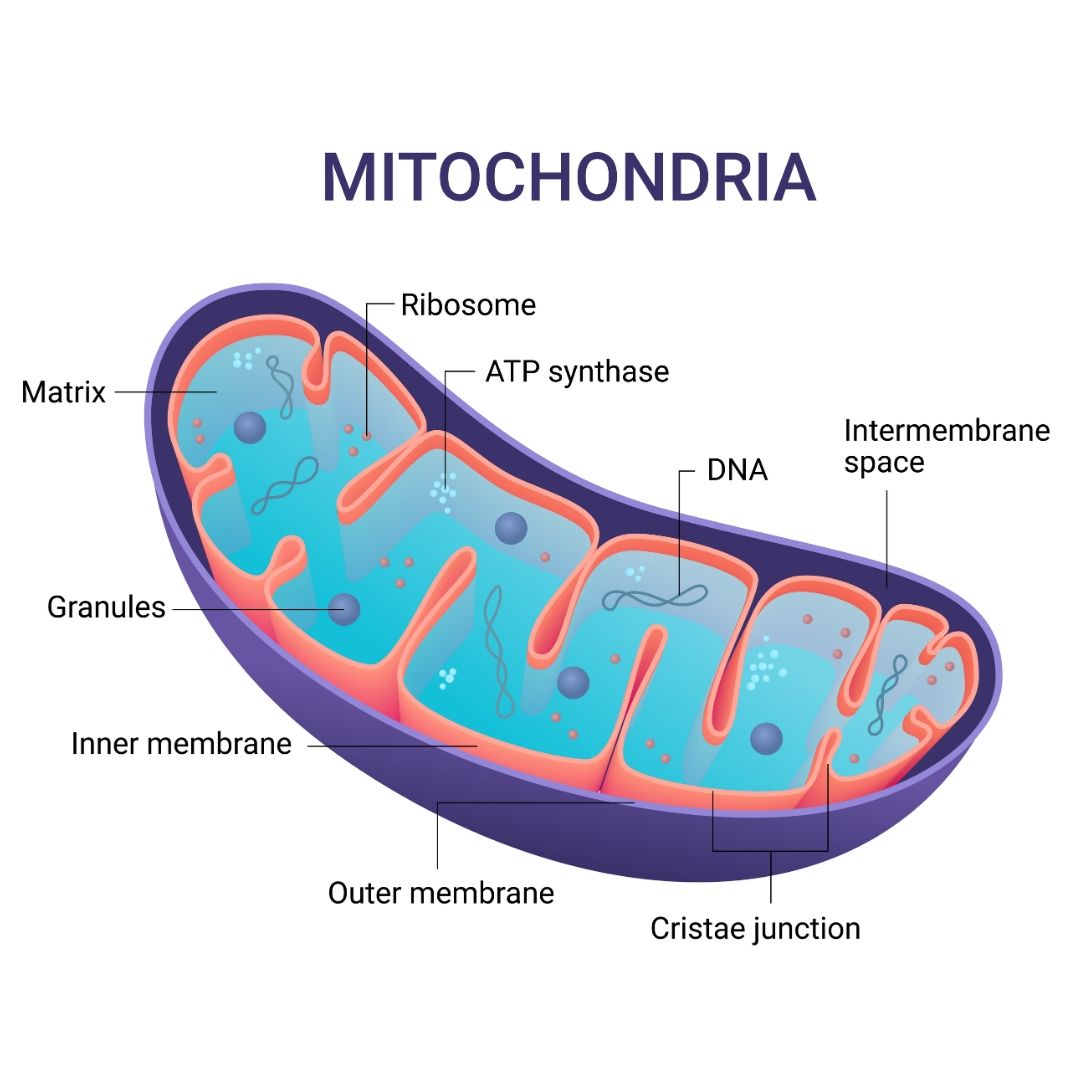Mitochondria Boosting: Unleashing Cellular Vitality for Longevity

Understanding Mitochondria: Our Cellular Powerhouses
 If you aren’t in the medical profession (and sometimes if you are) or in medical school right now, the subject of Mitochondria might be a foreign concept. No it isn’t a phobia or disease of any sort, and no it isn’t an ancient civilization or a place to vacation. For simplified terms, the mitochondria in each of your an my cells is like the engine that thrives on energy. These special little helpers inside our cells, and they do something really important for your systems that these cells make up to function and be in balance! When they are not working properly or ‘misfiring’ it has a detrimental effect on all of you. Fully functioning mitochondria throughout your body is supremely essential to health.
If you aren’t in the medical profession (and sometimes if you are) or in medical school right now, the subject of Mitochondria might be a foreign concept. No it isn’t a phobia or disease of any sort, and no it isn’t an ancient civilization or a place to vacation. For simplified terms, the mitochondria in each of your an my cells is like the engine that thrives on energy. These special little helpers inside our cells, and they do something really important for your systems that these cells make up to function and be in balance! When they are not working properly or ‘misfiring’ it has a detrimental effect on all of you. Fully functioning mitochondria throughout your body is supremely essential to health.
Mitochondria, the specialized structures found within your cells, play a crucial role in various cellular processes. Their primary function is to extract energy stored in nutrient bonds of your food and convert it into adenosine triphosphate (ATP – needed stuff for health and vitality) through cellular respiration. Given that mitochondria generate about 90% of the body’s ATP, they are rightfully hailed as “the powerhouse of the cell.”
Mitochondrial Dysfunction and the Effect on Aging
As we age, mitochondrial dysfunction becomes a hallmark of your body’s denigration, leading to the accumulation of damage and disruptions in cellular processes. Some say it is the reason we age, break down, get stiff, have pain moving, can’t see well… etc, etc, etc, All of which causes general inflammation (hence the pain and stiffness), and vital functions of organs and body systems to misfire. It’s ever so crucial to delve personally into ways to enhance mitochondrial function for a healthier aging process (a).
Why Should Boosting Mitochondria Matter To You?
Dysfunctions in ATP production mechanisms, (as some describe as cellular regeneration) especially in the electron transport chain, give rise to reactive oxygen species (ROS), which can be detrimental to mitochondria function. This dysfunction can and usually does set off a domino effect resulting in damage affecting biological processes. While aging (i.e. the overall time a cell or system is in operation) is a natural contributor (b), optimizing your mitochondrial fitness can mitigate these effects, contributing to overall well-being.
 The 10 Strategies to Boost Your Mitochondria Function
The 10 Strategies to Boost Your Mitochondria Function
1. Mitochondrial Nutrients: Fueling Efficiency Naturally
Mitochondrial nutrients(c) like B vitamins, minerals, and polyphenols (along with creatine, alpha-lipoic acid, pyrroloquinoline, L-carnitine and Coenzyme Q19) increases support for enzyme activity, enhance antioxidant defenses, and protect mitochondrial membranes. These can be obtained through supplements or natural unprocessed ‘one-step’ foods of meats, seafood, fruits, vegetables, nuts and seeds.
2. Supporting NAD+: A Vital Molecule for Cellular Health
NAD+ derived from vitamin B3 is crucial for delivering electrons to the electron transport chain. As NAD+ (nicotinamide adenine dinucleotide) levels naturally decrease with age (f), supplying the right nutrients can counterbalance this decrease, supporting mitochondrial function and longevity. Keep your levels where they need to be, especially as you age as they try to decrease (e). This also helps to fight against age-related disease (g), and can keep you living longer (h).
3. Red/Near-Infrared Light Therapy: Illuminating Cellular Resilience
This can happen through cytochrome C oxidase (i). Penetrating the skin, red/near-infrared light enhances the efficiency of the electron transport chain, improving cellular signaling and triggering beneficial responses, from wound healing to muscle recovery (j).
Benefits of this type of therapy can be improvement of cellular signaling via ROS (k), enhance antioxidant defenses, accelerate wound healing (l) and decreasing of muscle damage and improve recovery (m)
4. Calorie Restriction: A Pathway to Longevity
In our day, we are not needing to eat three square meals per day. Depending on our activity and exertion, you need to remember that eating is for providing your body the fuel it needs to function, NOT, to feel full. By reducing your calorie intake (n), this acts as a stress signal to your body, enhancing mitochondrial bioenergetic efficiency (o). This promotes electron transport chain activity, regulates ROS production, supports mitochondrial quality control mechanisms helping t repair cell damage and promotes the getting rid of the beyond repair mitochondria (called autophagy) while encouraging the production of new biogenic mitochondria (p).
5. Exercise: Empowering Muscles and Mitochondria
Exercise stimulates the production of more mitochondria and enzymes in muscle cells, enhancing respiratory capacity and improving mitochondrial biogenesis (q) and enzymes (r), delaying age-related decline (s).
6. Sleep: Recharging the Brain and Mitochondria
Quality sleep eliminates metabolic waste that is made from the high-energy functions of of the brain (t), like beta-amyloid (u), preventing damage to neuronal mitochondria (v). Prioritizing a good night’s sleep supports overall brain health. Poor sleep habits damage mitochondria (w) but done right every neuronal mitochondria you have can function optimally.
7. Relaxation Techniques: Mitigating Stress for Mitochondrial Health
Chronic stress can impact mitochondrial structure and function (x, y, & z). Practices like meditation and yoga upregulate genes linked to healthy mitochondrial function, countering stress-induced dysfunctions.
Adopting methods of reducing or relieving stress is essential in keeping things level and working correctly in regards to your mitochondria,
8. Sunlight: Finding the Right Balance for Vitamin D and Mitochondrial Activity
While excessive sun exposure can be harmful, adequate sunlight is vital for vitamin D production, necessary for mitochondrial activity. Balanced sunlight positively influences mitochondrial biogenesis and oxidative capacity.
It turns out that the sunlight generated vitamin Ds necessary for mitochondrial activity (aa) and that even with vitamin D supplements can help to improve the mitochondrial oxidative capacity of those who are vitamin D deficient (ab).
9. Heat Exposure: Harnessing Mitochondrial Adaptation
Mild heat stress triggers adaptive responses in mitochondria, enhancing functional capacity, shown in studies for the skeletal and cardiac muscles (ac) Sauna bathing, for example, has been linked to improved endurance performance and reduced cardiovascular disease risk.
10. Cold Exposure: Igniting Mitochondrial Activity to Keep Warm
Cold exposure stimulates mitochondrial activity in skeletal muscle and brown fat, supporting non-shivering heat production. Cold showers or cryotherapy can be effective in boosting mitochondria (ad).
In Conclusion: Fueling a Long and Healthy Life Through ‘Powerhouse’ Boosting
One’s health is centered on the healthy functioning of the Mitochondria, the generators of cellular energy; it’s pivotal for overall health. In a nutshell, they are like the superheroes inside our cells. Supporting their fitness contributes to optimal cellular functioning, making it a key factor in living a long and healthy life.
Here’s some FAQ’s
- Can boosting mitochondria really contribute to a longer life?
Yes, by enhancing mitochondrial function, you support overall cellular health, potentially extending your lifespan.
- Are supplements necessary for obtaining mitochondrial nutrients?
While supplements are an option, natural unprocessed foods also provide essential mitochondrial nutrients.
- How does exercise impact mitochondrial biogenesis?
Exercise stimulates the production of more mitochondria, enhancing their capacity and delaying age-related decline.
- Is sunlight exposure essential for mitochondrial activity?
Balanced sunlight exposure is crucial for vitamin D production, supporting mitochondrial biogenesis and oxidative capacity.
- Can stress really affect mitochondrial health?
Chronic stress can alter mitochondrial structure and function, emphasizing the importance of stress management for overall well-being.
FOOTNOTES:
(a) https://www.cell.com/cell/fulltext/S0092-8674(13)00645-4
(b) https://www.ncbi.nlm.nih.gov/pmc/articles/PMC4612387/
(c) https://www.tandfonline.com/doi/abs/10.1080/10284150500047161
(d) https://www.sciencedirect.com/science/article/pii/S0261561418324269
(e) https://journals.plos.org/plosone/article?id=10.1371/journal.pone.0042357
(f) https://www.ncbi.nlm.nih.gov/pmc/articles/PMC5419884/
(g) https://www.sciencedirect.com/science/article/abs/pii/S1568163718300060
(h) https://www.ncbi.nlm.nih.gov/pmc/articles/PMC5514996/
(I) https://iubmb.onlinelibrary.wiley.com/doi/full/10.1002/iub.359
(j) https://www.ncbi.nlm.nih.gov/pmc/articles/PMC4291815/
(k) https://www.ncbi.nlm.nih.gov/pmc/articles/PMC2996814/
(l) https://onlinelibrary.wiley.com/doi/full/10.1111/phpp.12282
(m) https://www.ncbi.nlm.nih.gov/pmc/articles/PMC5167494/
(n) https://www.sciencedirect.com/science/article/abs/pii/S009829971100032X
(o) https://www.pnas.org/doi/10.1073/pnas.0510452103
(p) https://physoc.onlinelibrary.wiley.com/doi/full/10.1113/JP270543
(q) https://physoc.onlinelibrary.wiley.com/doi/full/10.1113/EP085319
(r) https://journals.physiology.org/doi/full/10.1152/japplphysiol.00625.2011
(s) https://academic.oup.com/biomedgerontology/article/61/6/534/589451
(t) https://www.pnas.org/doi/10.1073/pnas.1201895109
(u) https://www.science.org/doi/10.1126/science.1241224
(v) https://www.sciencedirect.com/science/article/abs/pii/S1567724910001534
(w) https://pubmed.ncbi.nlm.nih.gov/27341212/
(x) https://www.sciencedirect.com/science/article/abs/pii/S2352154617300207
(y) https://journals.lww.com/psychosomaticmedicine/fulltext/2018/02000/Psychological_Stress_and_Mitochondria___A.2.aspx
(z) https://journals.lww.com/psychosomaticmedicine/fulltext/2018/02000/Psychological_Stress_and_Mitochondria___A.3.aspx
(aa) https://www.mdpi.com/1422-0067/19/6/1672
(ab) https://academic.oup.com/jcem/article/98/3/E509/2536948
(ac) https://www.jsams.org/article/S1440-2440(06)00139-3/fulltext
(ad) https://journals.physiology.org/doi/full/10.1152/physrev.00015.2003
https://www.ncbi.nlm.nih.gov/pmc/articles/PMC5545200/
https://www.nature.com/articles/s41598-018-26394-5

